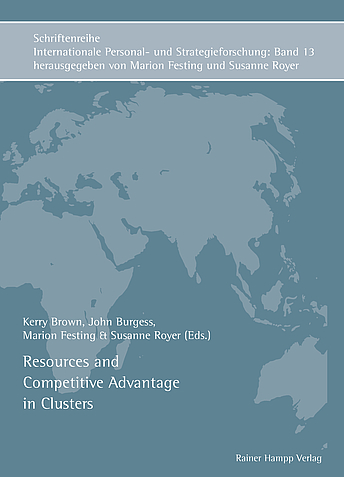Brown | Burgess | Festing | Royer
Resources and Competitive Advantage in Clusters
ISBN 978-3-86618-865-5
englischThis book series on research in international human resource management and strategy is designed to stimulate discussions on current developments in these disciplines. The scope of this series reflects the importance of the fields of strategy and human resource management in the international environment of a globalised world. Both fields have the potential to contribute essentially to the description and explanation of competitive advantage realisation, performance issues and to achieving other corporate goals and objectives. Therefore, these areas need attention in research as well as in practice. This series will focus on the latest research results in this field. This volume consists of a series of research articles divided into two sections. Part 1 examines the policy dimensions of clusters across Europe, Australia and the Middle East. Part 2 examines the strategy and management dimension of clusters. This book expands upon and develops the research around cluster development in a number of ways. First, the countries included in the research cover different regions in the world. Second, we have included several conceptual papers that provide interesting theoretical insights into the role of resources, cluster-specific knowledge and social exchange in clusters. Third, we have included several policy papers around the development of cluster policies and the operation of clusters. Fourth, we have included case studies that examine clusters in different national, industry and policy contexts. There are areas of cross over and complementarities in the research presented; as such the book provides an interlinked reflection of the scope and focus of contemporary research on clusters.
This book series on research in international human resource management and strategy is designed to stimulate discussions on current developments in these disciplines. The scope of this series reflects the importance of the fields of strategy and human resource management in the international environment of a globalised world. Both fields have the potential to contribute essentially to the description and explanation of competitive advantage realisation, performance issues and to achieving other corporate goals and objectives. Therefore, these areas need attention in research as well as in practice. This series will focus on the latest research results in this field. This volume consists of a series of research articles divided into two sections. Part 1 examines the policy dimensions of clusters across Europe, Australia and the Middle East. Part 2 examines the strategy and management dimension of clusters. This book expands upon and develops the research around cluster development in a number of ways. First, the countries included in the research cover different regions in the world. Second, we have included several conceptual papers that provide interesting theoretical insights into the role of resources, cluster-specific knowledge and social exchange in clusters. Third, we have included several policy papers around the development of cluster policies and the operation of clusters. Fourth, we have included case studies that examine clusters in different national, industry and policy contexts. There are areas of cross over and complementarities in the research presented; as such the book provides an interlinked reflection of the scope and focus of contemporary research on clusters.


